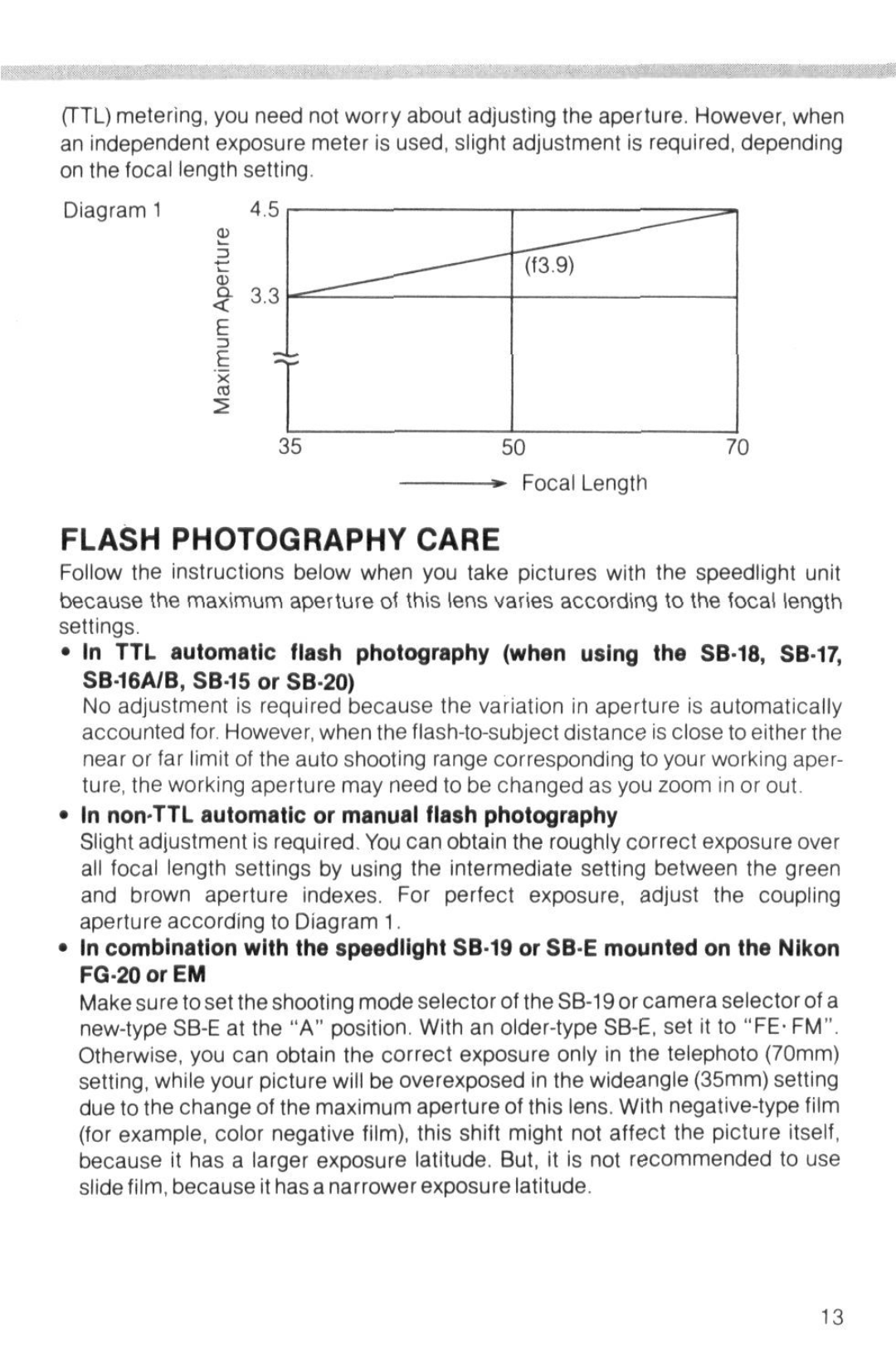
(TTL) metering, you need not worry about adjusting the aperture. However, when an independent exposure meter is used, slight adjustment is required, depending on the focal length setting.
Diagram 1 | 4.5 |
6
(f3.9)
£3.3
E
I =
355070
*• Focal Length
FLASH PHOTOGRAPHY CARE
Follow the instructions below when you take pictures with the speedlight unit because the maximum aperture ot this lens varies according to the focai length settings.
•In TTL automatic flash photography (when using the SB 18, SB 17,
No adjustment is required because the variation in aperture is automatically accounted for. However, when the
•In non-TTL automatic or manual flash photography
Slight adjustment is required. You can obtain the roughly correct exposure over all focal length settings by using the intermediate setting between the green and brown aperture indexes. For perfect exposure, adjust the coupling aperture according to Diagram 1.
•In combination with the speedlight
Make sure to set the shooting mode selector of the
13
